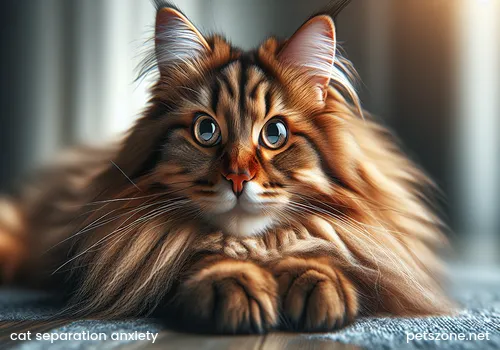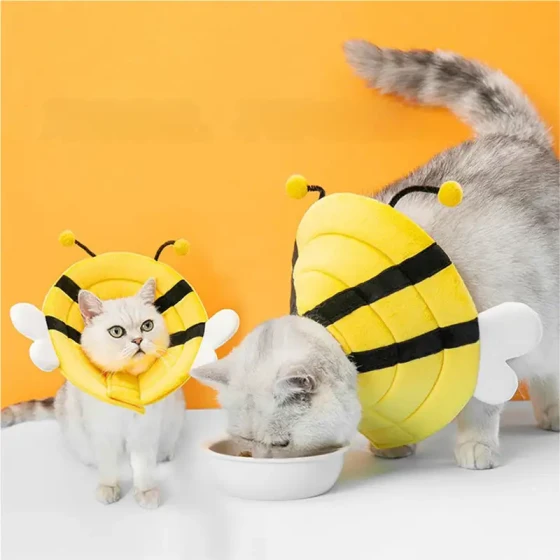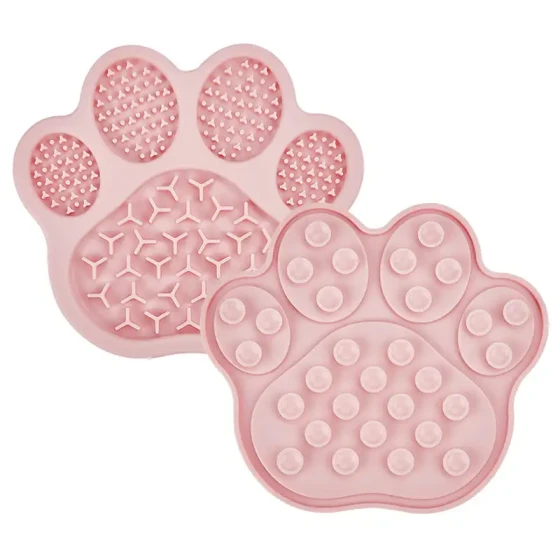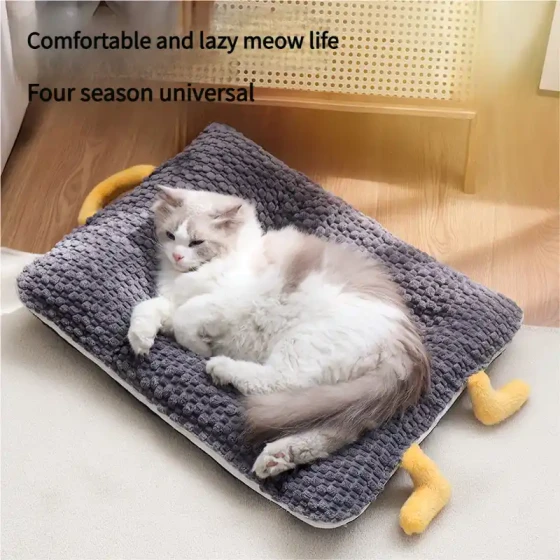Cat Separation Anxiety_Shy Why Cats Cry Heartbreakingly When Owners Leave
Cats crying heartbreakingly may be suffering from separation anxiety, an extreme stress response exhibited by cats when separated from their primary attachment figure (usually the owner), which seriously affects their physical and mental health.

Although traditional views consider cats as independent animals, they can also form deep emotional bonds with humans. When this bond is broken, especially during long periods of solitude, some cats may feel uneasy or even panic. Cat separation anxiety differs from that of dogs; its signs may be more subtle and thus easily overlooked by owners. Understanding the symptoms and causes of cat separation anxiety and taking appropriate measures is crucial to improving the quality of life for cats.
Common signs of cat separation anxiety
To determine if a cat has separation anxiety, carefully observe their behavior before, during, and after the owner leaves, as well as when the owner is home but unable to give attention. The following are some common signs:
- Excessive vocalization: This is one of the easiest symptoms to notice. Cats may emit continuous, painful cries or howls when the owner leaves or is about to leave. This sound is different from the usual affectionate or begging meows; it is more like a call for help or an expression of distress. Feedback from neighbors can sometimes help confirm this.
- Inappropriate elimination: Urinating or defecating outside the litter box is another common manifestation of cat separation anxiety. Sometimes, cats choose to eliminate on items with the owner's scent, such as beds or clothing. This may be their way of soothing themselves by mixing scents or attempting to "mark" to help the owner find their way home.
- Destructive behavior: Anxious cats may release stress by scratching furniture, doors, curtains, or biting objects. This destructive behavior is not malicious but rather a form of venting when feeling uneasy.
- Changes in appetite: Some cats refuse to eat when the owner is not home and may even develop digestive issues like vomiting or diarrhea. Long-term appetite loss seriously affects cats' health.
- Excessive licking or self-grooming: Grooming is a way for cats to soothe themselves, but in extreme anxiety, they may excessively lick their bodies, resulting in thinning fur, redness, or injury.
- Overly clingy or hiding: Some cats follow their owners everywhere while they are home and become anxious when the owner goes out of sight. Conversely, some cats choose to hide and avoid interaction when feeling anxious.
- Abnormal excitement when the owner returns: Cats with separation anxiety may display excessive excitement, clinginess, or frantic running upon their owner’s return, as if experiencing a long separation.
It is important to note that these symptoms may also indicate other health issues. Therefore, if you suspect your cat has separation anxiety, taking them to a veterinarian first to rule out potential medical causes is essential. Vets will conduct physical exams and related tests to identify urinary diseases, parasites, skin allergies, or other underlying illnesses.
Possible causes of cat separation anxiety
The causes of cat separation anxiety are complex and vary by cat, involving both innate factors and postnatal experiences and environment.
- Innate factors: Some studies suggest that female cats may be more prone to separation anxiety than males, and genetics may increase the risk, similar to hereditary depression in humans.
- Early experiences: Early weaning or lack of socialization led by the mother cat may cause cats to feel uneasy when separated from their primary attachment figure. Cats that have been abandoned or have experienced trauma are also more likely to develop separation anxiety.
- Relationship with the owner: Cats that are overly pampered or excessively dependent on their owner feel stronger anxiety when the owner leaves. If there is only one main caregiver at home, and the cat lacks other company, separation anxiety is more likely.
- Environmental and daily changes: Cats are creatures of habit. Sudden changes in living environment or daily routines—such as moving, changes in family members, or owner’s work schedule adjustments—can disrupt a cat’s sense of stability, triggering anxiety. Indoor-only cats may also develop separation anxiety due to a lack of external stimulation.
- Lack of environmental enrichment: Boredom or insufficient activity and play can exacerbate anxiety when cats are alone.
How to help cats alleviate separation anxiety?
Addressing cat separation anxiety requires patience and a combination of methods, typically including behavior modification, environmental improvements, and medication if necessary.
- Behavioral modification training: This is the "gold standard" for easing separation anxiety. Gradually increasing the duration of owner absence can help cats adapt to being alone. "Desensitization training" can be implemented by repeatedly triggering cues for the owner's departure (like keys jingling or shoe sounds) without actually leaving to break their association with anxiety.
- Increase environmental enrichment: Providing a stimulating and safe environment for alone time is vital. Install high perches or cat trees to satisfy their love of climbing and keep them feeling secure. Offer various toys, especially puzzle feeders or treat-dispensing toys, to distract and expend energy. A window perch can also provide "natural TV" to relieve boredom.
- Create safe spaces: Provide exclusive hiding spots such as cozy cat beds, boxes, or carriers where cats can retreat when feeling uneasy.
- Maintain routine: Keep feeding, play, and cleaning times stable, as a regular schedule helps build a sense of security.
- Stay calm when leaving and returning: Avoid prolonged emotional goodbyes and overly excited welcomes, which make separations seem like a big deal and exacerbate anxiety. Try petting and praising your cat 10-20 minutes before departure, then leave quickly. When returning, attend to your own tasks first and interact only after the cat has calmed down.
- Provide alternative companionship: When away for long periods, hire trusted friends, relatives, or professional pet sitters to provide social interaction for your cat.
- Use assistive products: Pheromone diffusers or sprays can simulate comforting scent signals to help relieve anxiety. Catnip has a calming effect for some cats but should be tested first.
- Increase interaction time: Spend fixed amounts of quality time daily playing and interacting with your cat to expend their energy and strengthen your bond.
- Medication assistance: For severe separation anxiety, veterinarians may recommend anti-anxiety medications or prescription supplements in conjunction with behavior modification.
Frequently Asked Questions
- Can cats really get separation anxiety?
Yes, although many think cats are independent, they do form attachment bonds with their owners and show anxiety symptoms when separated. - How to tell if a cat's crying is due to separation anxiety or other reasons?
If the cat’s crying mainly happens when the owner is about to leave, leaving, or during long periods alone, accompanied by behavioral abnormalities like inappropriate elimination or destructive behavior, it may indicate separation anxiety. However, crying can also be caused by pain, hunger, boredom, attention-seeking, or other diseases, so a vet consultation is recommended. - Does cat separation anxiety resolve on its own?
Mild separation anxiety may improve with environmental enrichment and behavior correction, but severe anxiety usually requires active owner intervention and professional help. - Can getting a second cat solve separation anxiety?
A second cat may provide companionship, but not all cats get along well, and it can sometimes create new issues. Assess your cat’s personality and adaptability carefully before considering a new cat. - Is punishing inappropriate behavior effective?
Punishing anxious cats is inappropriate and ineffective; it only increases fear and anxiety. Focus should be on understanding the reasons behind the behavior and using positive methods to alleviate anxiety.
In summary, cat separation anxiety is a serious issue that requires attention. Through careful observation, seeking professional help, and taking appropriate interventions, we can help our "masters" better adapt to being alone and enjoy healthier, happier lives.
-560x560.webp)


